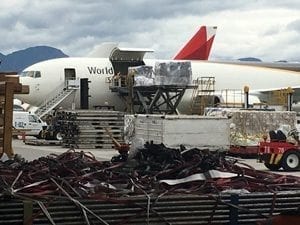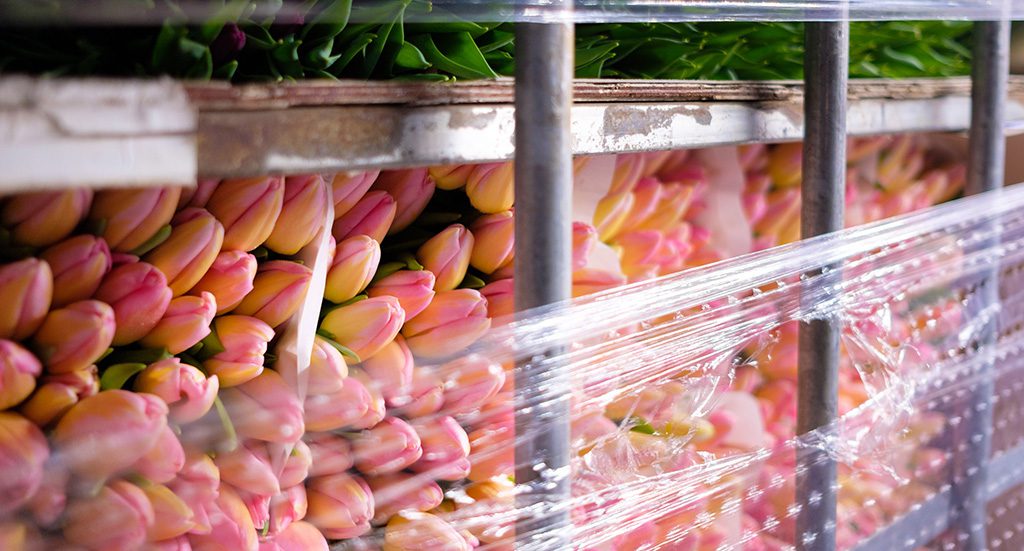
“Inbound freight from South America remains challenging, but the situation has improved somewhat,” said Steve Catando, purchasing manager for DV Flora. “Many importers are shipping earlier to allow for more time to offset any potential delays. Costs remain a real issue and all of the capacity that is being flown over normal space allotments are being flown at significantly higher costs.”
A late summer and early fall that read like something out of a science fiction movie — hurricanes, volcanoes, grounded planes, backlogged ports — has created new challenges for the floral industry supply chain and exposed some long-standing weaknesses.
What does that mean in practical terms for retailers planning for Thanksgiving, fall weddings, Christmas, Hanukkah — and even Valentine’s Day?
“The best advice I can provide is straight from my youth and being an Eagle Scout,” said Steve Catando, purchasing manager for DV Flora. “Be prepared.”
Catando noted that many industry members are still dealing with the effects of Hurricane Irma, which hit Florida last month and forced the temporary closure of major sea and airports.
“Inbound freight from South America remains challenging, but the situation has improved somewhat,” he said. “Many importers are shipping earlier to allow for more time to offset any potential delays. Costs remain a real issue and all of the capacity that is being flown over normal space allotments are being flown at significantly higher costs.”
Catando also noted “major limitations in greens, leatherleaf, and some key Florida plant crops.” In fact, Florida Commissioner of Agriculture Adam Putnam announced last week that the preliminary agricultural damages caused by Hurricane Irma in Florida will total more than $2.5 billion. (Look for more coverage of Florida growers in future issues of EBrief and in Floral Management magazine.)
Pam Uranga, supply chain manager for Mayesh Wholesale Florist, said her company is “80 to 90 percent” back to normal after Hurricane Irma. Still, she noted, that major storm wasn’t the only challenge growers, importers and wholesalers faced in recent weeks: A volcanic eruption also delayed flights in Quito, Ecuador, before and after Irma.
In addition, as several wholesalers noted, some air carriers continue to struggle financially due to an imbalance between north- and southbound freight volume, a situation that can lead to backlogs and delays as carriers wait for cargo before returning to Miami — and one that the recent round of weather-related challenges exacerbated. (Flights leave South America with product but return empty or only partially filled, in part because of slowdown in local economies and demand.) Another challenge that pre-dates the hurricane: The floral industry often competes with more profitable cargo for space on flights — some produce crops from Peru and Chile pay three-times more per kilogram than flowers, according to Catando. In addition, high-priority rescue and relief efforts in Puerto Rico, after Hurricane Maria, also pulled away charter planes that some companies tried calling in. (At press time, another natural disaster, wild fires in northern California, did not appear to be threatening major flower-growing regions in that state.)
Kennicott Brothers Company/Nordlie advised customers last week that they are seeing a two- to three-day delay in product coming from South America to Miami: “The summer was difficult and then Hurricane Irma caused a five-day stoppage in flights. The airlines have seen a backlog from all three major ports.” (Bogotá and Medellin, in Colombia, and Quito, in Ecuador.)
“The logistics situation is real and will continue to be a challenge moving forward,” said Lenny Walker, regional director for Kennicott Brothers. “We don’t believe this will before Christmas. History shows airlines have more freight opportunities from other ports in November and December.”
Catando predicts demand for Thanksgiving will be strong while air cargo “capacity will remain the same.”
“Many companies are exploring with sea container freight to help relieve some of the air space,” he said. “We expect air freight challenges to continue for December and through Valentine’s Day 2018.”
His advice for retailers: “Order early for sure and plan in advance,” he said. “I recommend they add a day or two to their real desired delivery day. , I would rather have my product cold and in a cooler a day earlier than wondering if I’m going to get it.”
Kennicott Brothers suggested a similar approach to its customers. “Please continue to get your orders in as early as you can. The capacity is tight and it’s taking more time to get everything to our locations.”
That’s also a message Uranga is hoping to spread.
“From a wholesale-level, it’s getting more difficult to handle late orders,” she said. “It’s been a challenging few weeks, but we know the issues that we’re facing. When retailers plan ahead and order early, we’re golden. We can find ways to make it work.”






